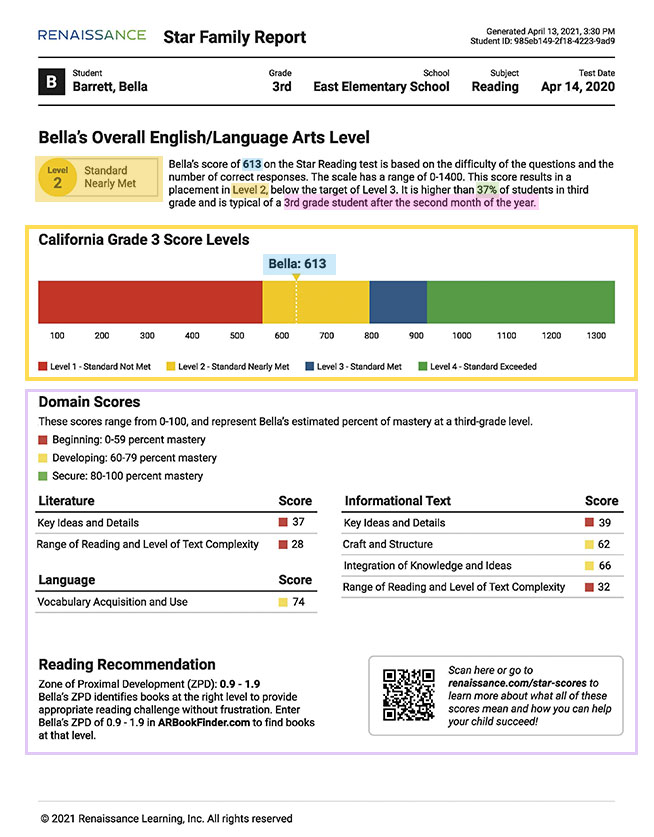What scores are shown on the report?
Here is a sample report. These scores will not match your child’s scores.
Bella’s score of 613 on the Star Reading test results in a placement in Level 2, below the target of Level 3. This score is higher than 37% of students in third grade and is typical of a 3rd grade student after the second month of the year.
Scaled Score (Example: 613)
Scaled Score is useful for comparing student performance over time and across grades. A scaled score is calculated based on the difficulty of the questions and the number of correct responses.
Benchmark Categories (Example: Level 2)
Each state or school district has established unique benchmarks that students must reach to be considered proficient. Use the Star Family Report to determine if your child is meeting expectations.
Percentile Rank (Example: 37)
Percentile Rank (PR) ranges from 1–99 and compares student performance to other students in the same grade nationwide. For example, a student with a percentile rank score of 37 performed as well as or better than 37 percent of other students in the same grade nationally.


